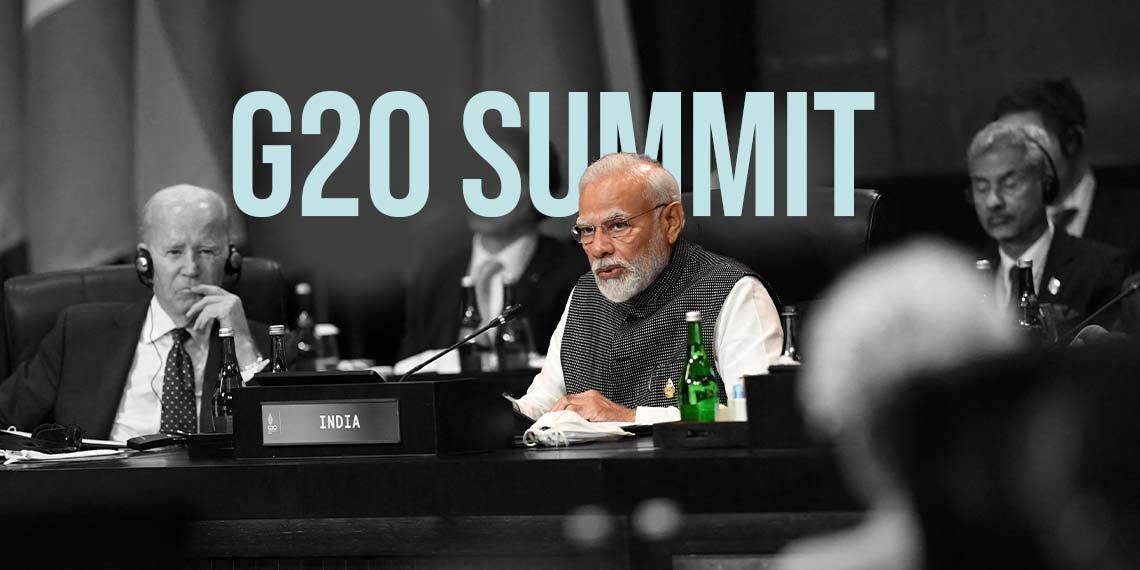Adding to the country’s list of achievements in 2022, India has assumed the presidency of the G20 Summit. Group of Twenty (G20) is a global forum that comprises 19 countries and the European Union. It is a strategic multilateral group that came into existence in 1999 to address global economic issues with a focus on sustainability. On December 1, India took over the responsibility from Indonesia, with Prime Minister Narendra Modi describing the opportunity to preside over the forum as “historic”.
Here is a deep dive into what it means for India to assume the G20 presidency and why it is a matter of pride for the country.
What is the G20 summit?
G20 is an international forum focused on solving economic and social issues. Regular G20 annual meetings or summits started only in 2008. At these summits, the heads of governments, finance ministers, and other important officials of member countries discuss significant global issues such as economic challenges, climate change, and sustainable development.
Every year, invitations are sent to other non-member countries, NGOs and international organisations such as the United Nations and International Monetary Fund.
The G20 Summit process is divided into two tracks – sherpa and finance. The sherpa track – led by sherpas (representatives of a head of state) – deals with non-financial issues such as climate change, health, and corruption. The finance track focuses on economic issues with year-round meetings led by finance ministers and central bank governors.
India and the G20 summit
The G20 Summit operates under an annual rotating presidency rule. The country in the presidency role will receive support and assistance from nations that are the previous and future holders of the position. In this case, India will receive support from its predecessor Indonesia and its successor Brazil.
While the G20 presidency is not indicative of any formal power, it will enable India to attract the attention of global leaders to pressing issues. India will set the tone for critical policy decisions, and Indian cities will play host to international delegates, opening up many opportunities for exchanging ideas and concerns.
As part of its presidency responsibilities between December 1, 2022, and November 30, 2023, India will preside at over 200 meetings on various global issues. The final summit meet, scheduled for September in New Delhi, will see 43 heads of delegations. This is the largest group of delegates in G20 history, and India will be leading the conversation on issues such as agriculture, climate crises, sustainable development, health and energy consumption.
What to expect from India’s presidency
The government has released the official logo and website for the G20 summit. “Vasudhaiva Kutumbakam” is the theme of India’s G20 presidency, hinting at the focus on sustainable, inclusive and responsible choices. Prime Minister Narendra Modi also shared the three guiding principles that India will abide by during its presidency. These include connecting the developed and the developing world, representing the eastern bloc and keeping divisive pressures at bay to preserve multilateralism.
Additionally, India has listed its G20 presidency priorities as follows:
- Climate action and financing
- Accelerating implementation of sustainable development goals.
- Digital public goods and data for development
- Debt distress
- Reformed multilateralism
- Women-led development
Under India’s presidency, a new working group on disaster risk reduction has been formed to promote group collaboration across the G20. It will conduct multidisciplinary research and exchange best practices on disaster risk reduction.
Bottom Line:
India is working towards becoming a five-trillion-dollar economy and incorporating digitisation in all aspects of democracy. The G20 presidency can help these efforts by drawing attention to international issues that can be addressed through common consent, with India spearheading this change.








